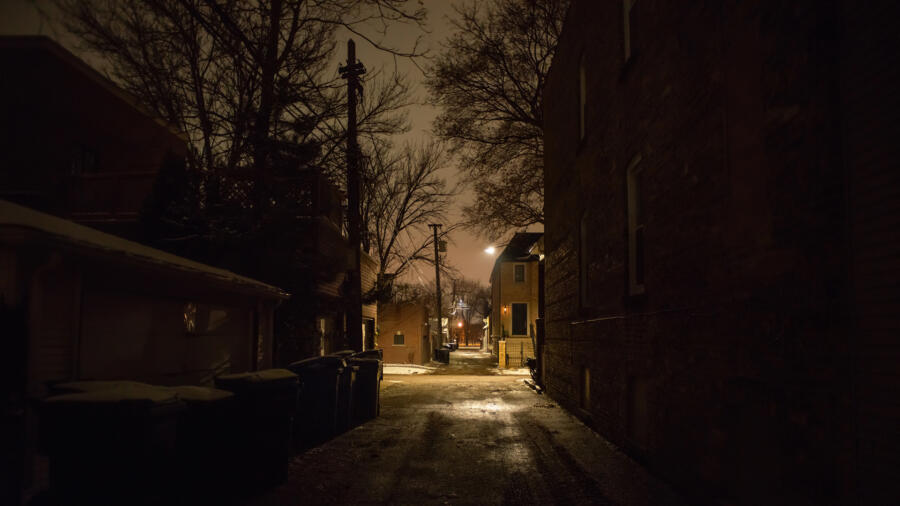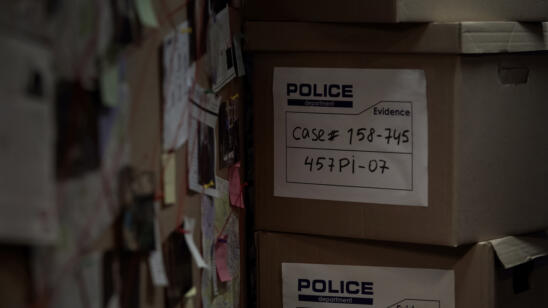For nearly two decades, between 2001 and 2018, Chicago faced a curious rise in the number of unsolved homicides of women that involved strangulation—all in certain areas of the city. But according to data collected by the Murder Accountability Project, the city’s police have so far been unable to find the culprit, or culprits.
The nonprofit, which tracks the locations and circumstances of unsolved murders nationwide with a computer algorithm, published a report in March 2019 describing a cluster of 51 murders of women via strangulation that occurred on Chicago’s West Side, Near South Side and Far South Side.
“There is one very odd pattern in the map: There is a very linear array of body recovery sites on the Chicago Near South Side, which forms an almost perfect north-south line,” says Thomas Hargrove, the nonprofit’s founder and chairman. “That line coincides pretty precisely with the Chicago Transit Green Line elevated train. We don’t know what to make of that. We certainly have shared that fact with the Chicago police. They don’t know what to make of it either. One thing we’re pretty sure about is, it’s not a coincidence.”
A Possible Break
In January 2020, the Chicago Police Department was able to connect a man, Arthur Hilliard, with one of these unsolved murders.
Based on DNA evidence, Hilliard was charged with the murder of Diamond Turner, a 21-year-old woman who reportedly went missing on March 1, 2017, and was found dead two days later in a city garbage can. According to the Cook County State’s Attorney’s Office, the medical examiner ruled that Turner died from blunt force trauma and asphyxia. The garbage can was behind Hilliard’s apartment in the 7300 block of South Kenwood Avenue.
That location falls within the cluster, Hargrove says.
Hargrove says he spoke with Chicago Police Department’s Chief of Detectives Brendan Deenihan to discuss whether Hilliard could be connected to some of the other strangulation murders in the past two decades.
“I can tell you, generally speaking, that the Chicago Police Department, insofar as it’s able, is going to carefully consider that possibility,” Hargrove says. “Any arrest they make among these 51 strangulations should be—and I’m sure will be—aggressively reviewed for the possibility that they are in fact linked to other killings.” Chicago Police Department declined to comment for the story.
Hilliard pleaded not guilty on March 11, 2020 and is being held without bail at the Cook County Jail. His next expected court date is May 26, 2020 as of the time of publication.
‘People Are Scared, and People Don’t Want to Talk’
While it remains to be seen whether Hilliard’s case will help solve other cold-case strangulations of women in Chicago, there are people pushing for systematic changes within law enforcement and how they work with communities to solve crimes. Dawn Valenti, who has been a victims’ advocate and crisis responder since 2007, supported Turner’s family after the murder, aiding them with the logistics of the aftermath. While she was with victim advocacy nonprofit Chicago Survivors, she helped provide the Chicago Police Department with training to take certain precautions in the aftermath of homicides. The goal was to help officers better understand the crimes from a survivor’s perspective.
For example, she urged awareness that officially designating a homicide as “gang-related” can affect victims and their families’ eligibility for life insurance—even when the victim wasn’t in a gang. She also stressed how deeply the trauma can affect family members, from causing them to forget important information, like their phone number, to the difficulty of hearing new information about the case. One recommendation: When updating a victim’s loved one, make sure they are not alone.
“There are a lot of parents who go to sleep a parent and wake up as a parent without a child,” Valenti says.
When it comes to the city’s unsolved homicides, Valenti says, part of the challenge is a lack of communication within communities. “What I’ve seen happen is a couple things: People are scared, and people don’t want to talk. They want to retaliate,” she says.
Sometimes when police question families, people decline to provide information for the investigation, she says. In one case she worked on, the parent of a murder witness refused to provide police with contact information for the child, in an effort to protect them.
“The living cling to the living,” she says.
And while she acknowledges it might appear that a serial killer is responsible for the deaths of the dozens of women killed by strangulation, she says closer examination may suggest that some of the murders are simply connected—that some of the women’s stories intersect—or that there are coincidental similarities.
Restructuring
Valenti is hopeful that recent changes within the city government will help crack more cold-case murders.
In late 2018 and 2019, police policy organization The Police Executive Research Forum, through a Bureau of Justice Assistance grant, assessed the Chicago Police Department’s homicide investigations process in an effort to improve homicide clearance rates. It made dozens of recommendations, and the department has taken several steps so far to tackle the city’s rising violent crime rates.
One of these steps, which the organization advised, was further dividing the Chicago Police Department’s geographic boundaries in order to decrease the time it takes for detectives to arrive at the scene of a shooting or homicide. The Chicago mayor’s office announced April 30 that it is redrawing policing districts, adding two to the existing three, and redistributing the department’s 900 detectives across the five police areas. Previously, since 2013, there were just areas North, Central and South. For the first time, Chicago Police Department will also have a citywide homicide unit, dedicated to investigating deaths. In addition, each of the five newly drawn areas will have its own homicide division, which will report to the corresponding area deputy chief.
“CPD as an entity was siloed, with a lot of people responsible for problems in the same geography. This concentrates the accountability under the geographic chiefs and commanders,” Beck told CBS.
Chicago Police Department hopes the smaller policing districts will mean faster arrival times at crimes scenes, increasing the chances that detectives can locate witnesses and further limit evidence contamination.
Beck said that these structural changes also are intended to help build trust between police and communities.
“When you’re assigned to a piece of geography, you not only have ownership in the results that you achieve—because that is now the turf that you’re responsible for—but you’re also much more likely to engender trust if you work with the same community and begin to understand that community in a much better way,” he told the Chicago Tribune. “Part of community policing is being responsive to the community in the way that you police, and our most responsive people are the ones that are tied to that geography. And I want that to be part of what our detectives feel too.”
And while she’s confident that the CPD is eager to solve some of these cold-case homicides, Valenti says, “It’s not going to happen overnight.”
Related Features:
Is There a Serial Killer in Chicago Right Now, Strangling Women and Burning Their Bodies?
The Lane Bryant Shootings: Chicago Mass Murder Still Unsolved More Than 10 Years Later
The Tylenol Murders: Is It Too Late to Solve the Famous Cold Case?


